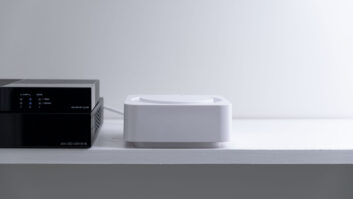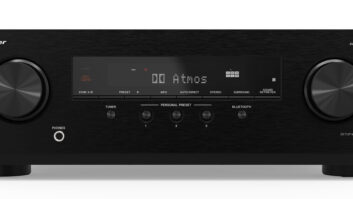For the February print issue of Residential Systems, I wrote about wireless audio, a topic that has been experiencing significant growth in popularity, acceptance, and product offerings. While writing the article, I quickly realized that I should have tackled wireless loudspeakers and wireless audio systems separately. Addressing both of those items bundled together was too big for the space limitations we have with print, and I think they deserve separate billing. [Read the full version of the story here.]
Through my research, I stumbled upon an emerging technology, Skifta, which is a wireless content aggregation and distribution system enabled by Wi-Fi and DLNA. Skifta, powered by Qualcomm Atheros, has been available as an Android app for some time. The iOS version just launched at CES, where a partnership was announced between Qualcomm and Tymphany, a consumer electronics ODM, to bring Skifta to more hardware devices.

In short, Skifta helps you manage audio and video content from various sources and allows you to play it anywhere with an internet connection. But currently, since it’s only available as an app, it is limited to playing over Wi-Fi or DLNA devices. This is what Tymphany is working to change.
“The ultimate execution of the technology, when it launches in its final form later this year, you’ll be able to aggregate content from all these devices and distribute it to up to 32 nodes of rendering devices,” described Tom Jacoby, Tymphany chairman and chief development officer.
“Rendering devices” could be any speaker, television, or legacy devices enabled by a module, currently in development.
I decided to download the app myself to see what it could do on its own.
Once the app downloaded, I visited the Skifta website to “get started.” There are three options available: play music straight from your mobile device to a DLNA-compatible player, play media through the cloud on a TV or stereo using your phone, or remotely stream media from home to your phone.
This third option really appeals to me and involved installing the desktop app. I was surprised to see that there was a Mac installer option. Unfortunately, once I attempted to run the download, I received an error message saying the file was damaged and couldn’t be opened—also advising me to move it to the trash.
I decided to try a different browser; no dice. As a long shot, Apple’s desktop App Store turned up no results for a Skifta search.
A bit frustrated, yet admittedly not that surprised, I turned to the PC my husband uses.
Installation was successful there, although I’m confused about the account login step that required me to enter a “place.” When I opened the account on my phone, I just typed in “home.” When I entered the login info on the PC, I had to enter a different place, even though I was still at home. I should have put “mobile” on my phone I guess, but there was no explanation about this step along the way. I would have liked to have an “info” button or something with that prompt.
I also realized that the only DLNA device I have is a PS3, which can’t be detected by Skifta automatically—some devices are just like that, the app said. It’s what is known as an “unlisted player.” Basically, you can only manage the content from the PS3 (instead of your phone) if that’s the source you want to use. Under “music” on the PS3 menu, icons popped up for Skifta, and “getting started with Skifta,” but when I selected them, I got an error message saying, “A DLNA protocol (7522) error has occurred.” Google informed me that this is a problem with the PS3. I checked that my software was up to date, and it was.

At this point, I decided I’d already spent far too long trying to get this system working. If I had another DLNA device, I think I’d have much better luck. I’ll have to try this at someone else’s house, some other time.
This experience vividly illustrated the need for that external Skifta module device that is currently under development and likely to be available in a year or so, according to Jacoby. The module is basically a wireless connectivity device with some local data processing. It connects to legacy devices, audio or video, and voila—music, pictures, anywhere, any device.
From a competitive standpoint, Jacoby emphasized Skifta’s open architecture and how it’s not meant to be competitive with other systems. “The idea is to deliver products that can interact with any other system that will allow us access,” he said.
(Apple’s AirPlay, of course, has closed access, and there are other proprietary systems on the market designed not to play nice with others.)
Overall, I’m really impressed by the look and feel of Skifta’s app, as well as its integration with content “channels”—all of those social apps on to which we love to post pictures, videos, and music (Soundcloud, Rdio, ShoutCast, Soma.fm, Dropbox, Instagram, Facebook Photos, Picasa, Flickr, Photobucket, TED Talks, and more). There’s definitely great potential.
Tymphany, again, is the ODM, so they’re working with manufacturers to design their products with Qualcomm’s Skifta technology. Jacoby couldn’t go into much detail, but he noted that there are “several well known brands that are very interested.”
The earliest adopters could have some sort of product in execution later this year, in the Fall, or early next year. Jacoby anticipates “a fair assortment of products offered” at CES 2014.







